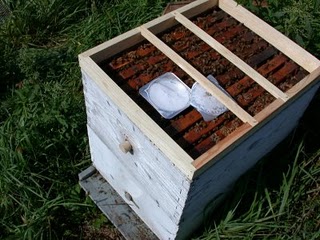 |
| Api Guard gel pack |
 |
| HopGuard cardboard strips are chewed up and disposed of by the bees |
 |
| Mite Away Qwik Strips |
Now that summer is coming to an end Varroa is starting to ramp up. Many beekeepers I have talked to have started seeing mites on the bees. Usually when the mites are visible on the bees there is a high mite load in the colony.
Now is a good time to check the mite load on colonies. Here is a link to the Univ of MN. Poster 155 checking for Varroa with the powdered sugar method.
http://beelab.umn.edu/Resources/Free-bees/index.htm
If the mite numbers are high and mite treatments are necessary, there are several options and some are considered food additives and very bee friendly.
HopGuard is from the hops plant. Treatment is 2 strips per deep per week for a three week period. Strips can be put on at any time.
MiteAway Quick Strips Formic Acid, they are a one week treatment. Strips can be put on at anytime it is 85 degrees or less. Works best in the 75 - 85 degree daytime temperatures.
Apiguard, thymol gel - supers have to be off, fall treatment only. Two foil gel packs on top of colony. One month treatment, one foil pack, two weeks later add the second one. Daytime temperatures should be in the 70 - 85 degree range.
All of these mite treatments need to applied according to the label. Always follow manufacturers guidelines when using any mite treatment.
Keeping mites low helps winter survival of the colony.














